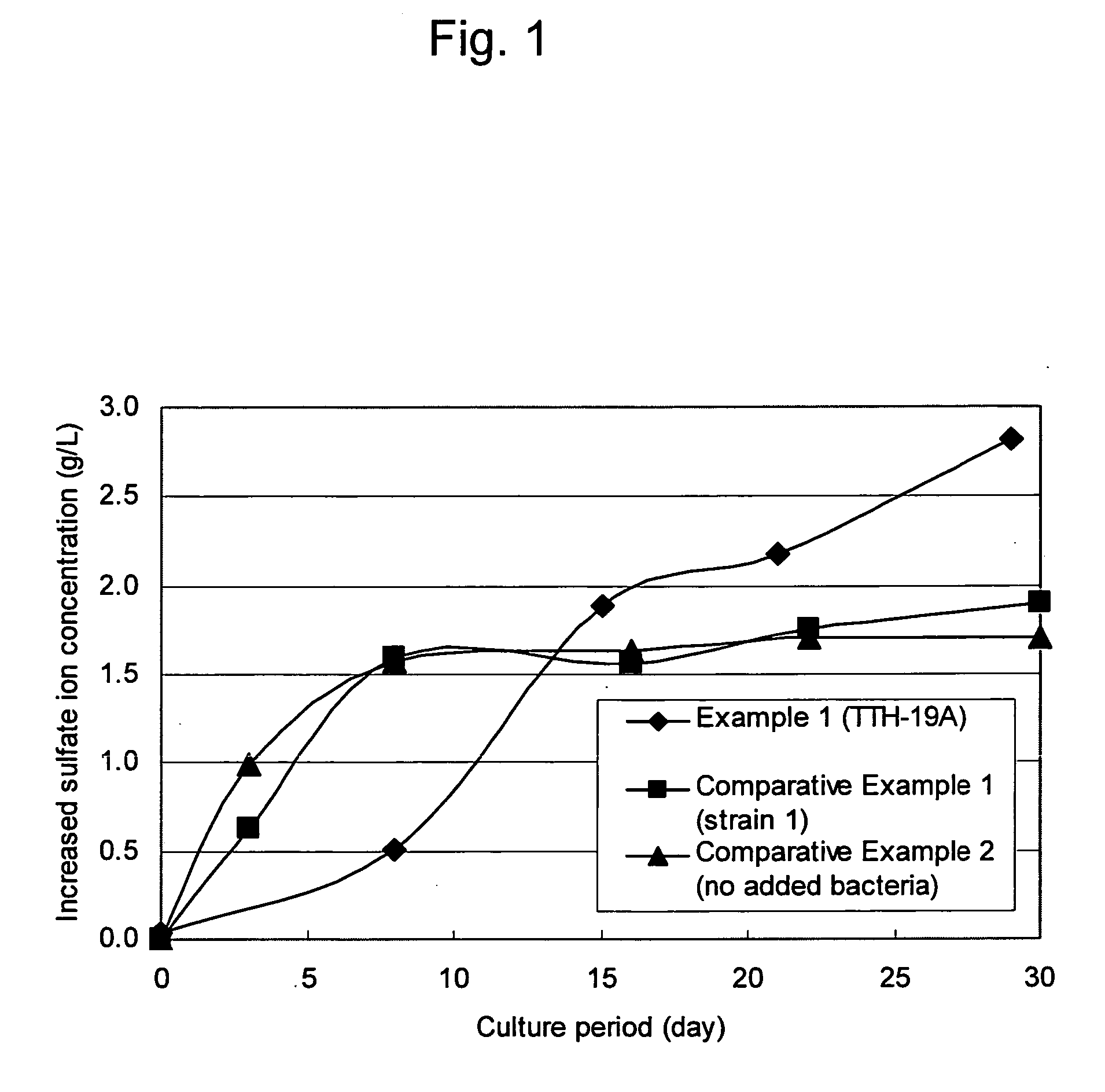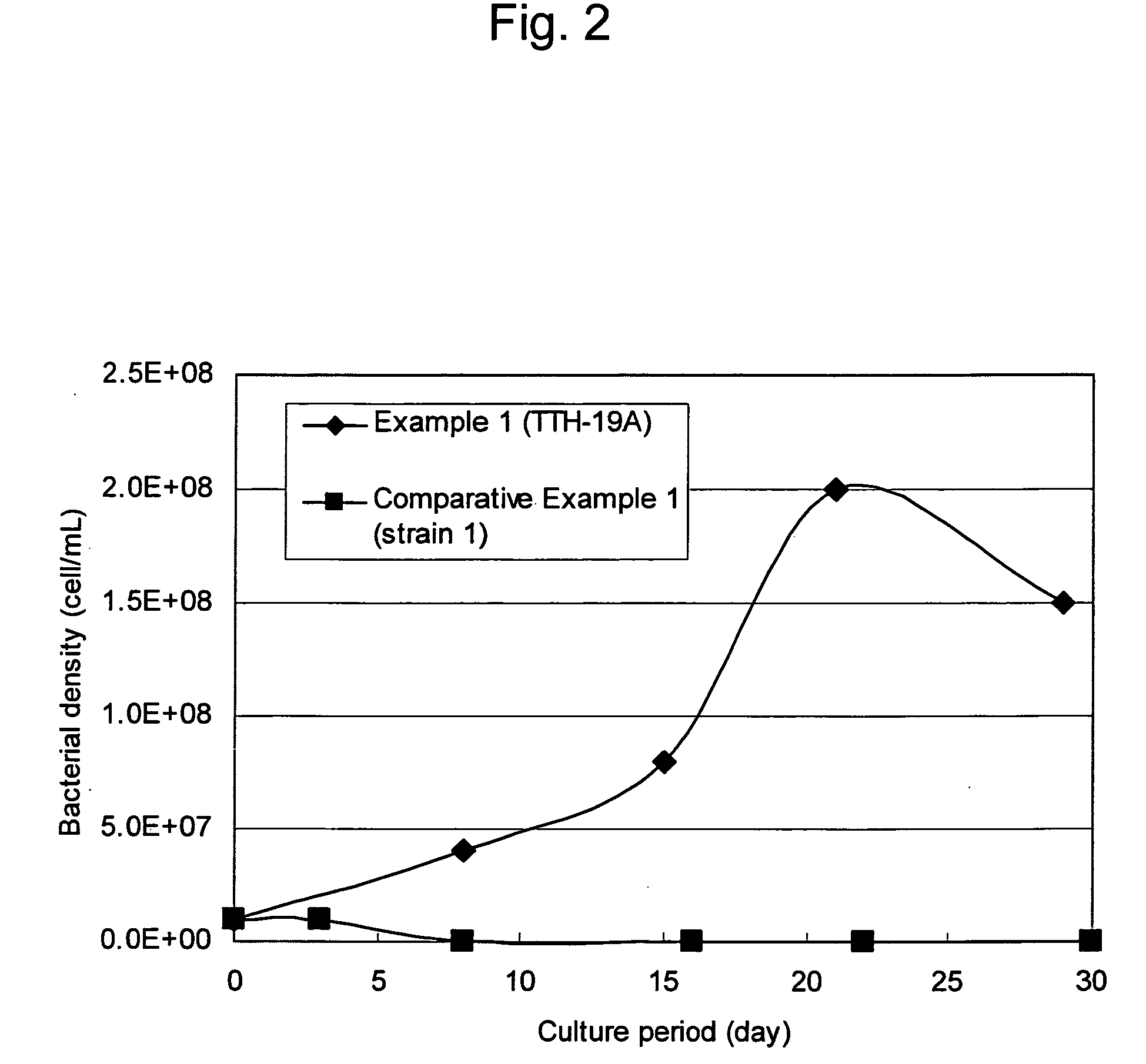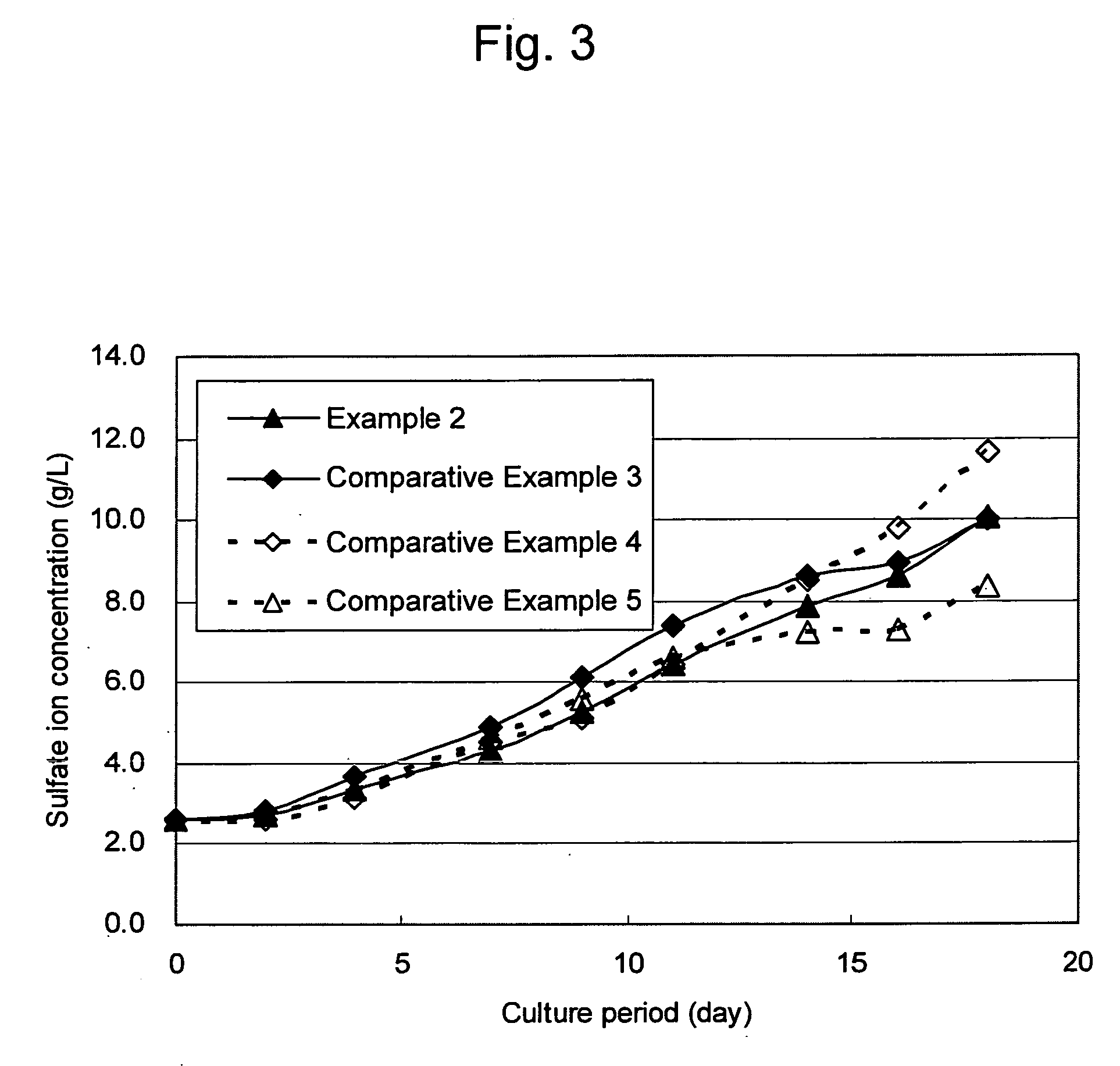Chloride ion-resistant sulfur-oxidizing bacteria
a sulfur-oxidizing bacteria and chloride-ion-resistant technology, applied in the field of microorganisms, can solve the problems of marked inhibition of the ability of sulfur-oxidizing bacteria to oxidize sulfur, and achieve the effect of excellent ability to oxidize sulfur
- Summary
- Abstract
- Description
- Claims
- Application Information
AI Technical Summary
Benefits of technology
Problems solved by technology
Method used
Image
Examples
example 1
[0051] Concentrate of Chilean origin containing chalcopyrite as a main constituent was used as a target sulfur substance. This quality was as follows: Cu, 28% by mass; Fe, 28% by mass; S, 32% by mass.
[0052] Three gram of the above concentrate was mixed with 300 mL of a culture medium (containing ammonium sulfate 3 g / L, potassium hydrogenphosphate 0.5 g / L, magnesium sulfate heptahydrate 0.5 g / L, and potassium chloride 0.1 g / L) adjusted to pH 1.5 to 1.8 with sulfuric acid and poured into a 500 mL Shaking flask. To the culture medium in the flask, sodium chloride was added so that the concentration became 10 g / L, and further the sulfur-oxidizing bacterium, Acidithiobacillus sp. TTH-19A, was added at a density of 1×107 cells / mL. Then the flask was plugged with a sponge stopper and shaken at room temperature. The concentration of sulfate ion in the cultured medium was measured with time using an ICP emission spectrophotometer. The bacterial density of the culture was also measured with ...
examples 2 and 3
[0056] Elemental sulfur powder (product of Wako Pure Chemical Industries, Ltd., special grade) was used as a target sulfur substance.
[0057] One gram of the above sulfur powder was mixed with 300 mL of the culture medium (containing ammonium sulfate 3 g / L, potassium hydrogenphosphate 0.5 g / L, magnesium sulfate heptahydrate 0.5 g / L, and potassium chloride 0.1 g / L) adjusted to pH 1.8 with sulfuric acid and poured into a 500 mL Shaking flask. To the culture medium in the flask, sodium chloride was added so that the concentration became 10 g / L (Example 2) or 20 g / L (Example 3). Further, the sulfur-oxidizing bacterium, Acidithiobacillus sp. TTH-19A, was added to the culture medium at a density of 1×106 cells / mL, and the flask was plugged with a sponge stopper and shaken at room temperature. The concentration of sulfate ion in the cultured medium was measured with time using the ICP emission spectrophotometer.
PUM
| Property | Measurement | Unit |
|---|---|---|
| Concentration | aaaaa | aaaaa |
| Alkalinity | aaaaa | aaaaa |
Abstract
Description
Claims
Application Information
 Login to View More
Login to View More - R&D
- Intellectual Property
- Life Sciences
- Materials
- Tech Scout
- Unparalleled Data Quality
- Higher Quality Content
- 60% Fewer Hallucinations
Browse by: Latest US Patents, China's latest patents, Technical Efficacy Thesaurus, Application Domain, Technology Topic, Popular Technical Reports.
© 2025 PatSnap. All rights reserved.Legal|Privacy policy|Modern Slavery Act Transparency Statement|Sitemap|About US| Contact US: help@patsnap.com



